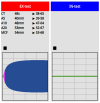Acquired Hemophilia A after SARS-CoV-2 Infection: A Case Report and an Updated Systematic Review
- PMID: 37760842
- PMCID: PMC10526109
- DOI: 10.3390/biomedicines11092400
Acquired Hemophilia A after SARS-CoV-2 Infection: A Case Report and an Updated Systematic Review
Abstract
The role of severe acute respiratory syndrome coronavirus-2 (SARS-CoV-2) has been implicated in the pathogenesis of acquired hemophilia A (AHA). The aim of this study is to report our case and to summarize clinical studies on de novo AHA after SARS-CoV-2 infection. We performed a systematic search on the association of SARS-CoV-2 with AHA in four medical databases up to 28 May 2023. Eligible studies should include de novo AHA patients who had SARS-CoV-2 infection before or concomitant with the diagnosis of AHA. Findings were synthesized narratively. In addition, we report the case of a 62-year-old female patient, who presented to our clinic with left flank pain 2 weeks after SARS-CoV-2 infection. Clinical investigations confirmed AHA and imaging studies revealed retroperitoneal bleeding. Her hemostasis was successfully secured with bypassing agents; however, despite immunosuppressive therapy, high inhibitor titer persisted. In the systematic review, we identified only 12 relevant cases with a questionable cause-effect relationship between SARS-CoV-2 infection and AHA. Based on the qualitative analysis of the relevant publications, current clinical evidence is insufficient to support a cause-effect relationship. The analysis of data from ongoing AHA registries can serve further evidence.
Keywords: COVID-19; SARS-CoV-2; acquired hemophilia; case report; coagulopathy; hemostasis.
Conflict of interest statement
The authors declare no conflict of interest.
Figures



References
-
- Collins P.W., Hirsch S., Baglin T.P., Dolan G., Hanley J., Makris M., Keeling D.M., Liesner R., Brown S.A., Hay C.R. Acquired hemophilia A in the United Kingdom: A 2-year national surveillance study by the United Kingdom Haemophilia Centre Doctors’ Organisation. Blood. 2007;109:1870–1877. doi: 10.1182/blood-2006-06-029850. - DOI - PubMed
-
- Tiede A., Collins P., Knoebl P., Teitel J., Kessler C., Shima M., Di Minno G., d’Oiron R., Salaj P., Jiménez-Yuste V., et al. International recommendations on the diagnosis and treatment of acquired hemophilia A. Haematologica. 2020;105:1791–1801. doi: 10.3324/haematol.2019.230771. - DOI - PMC - PubMed
Publication types
LinkOut - more resources
Full Text Sources
Miscellaneous

